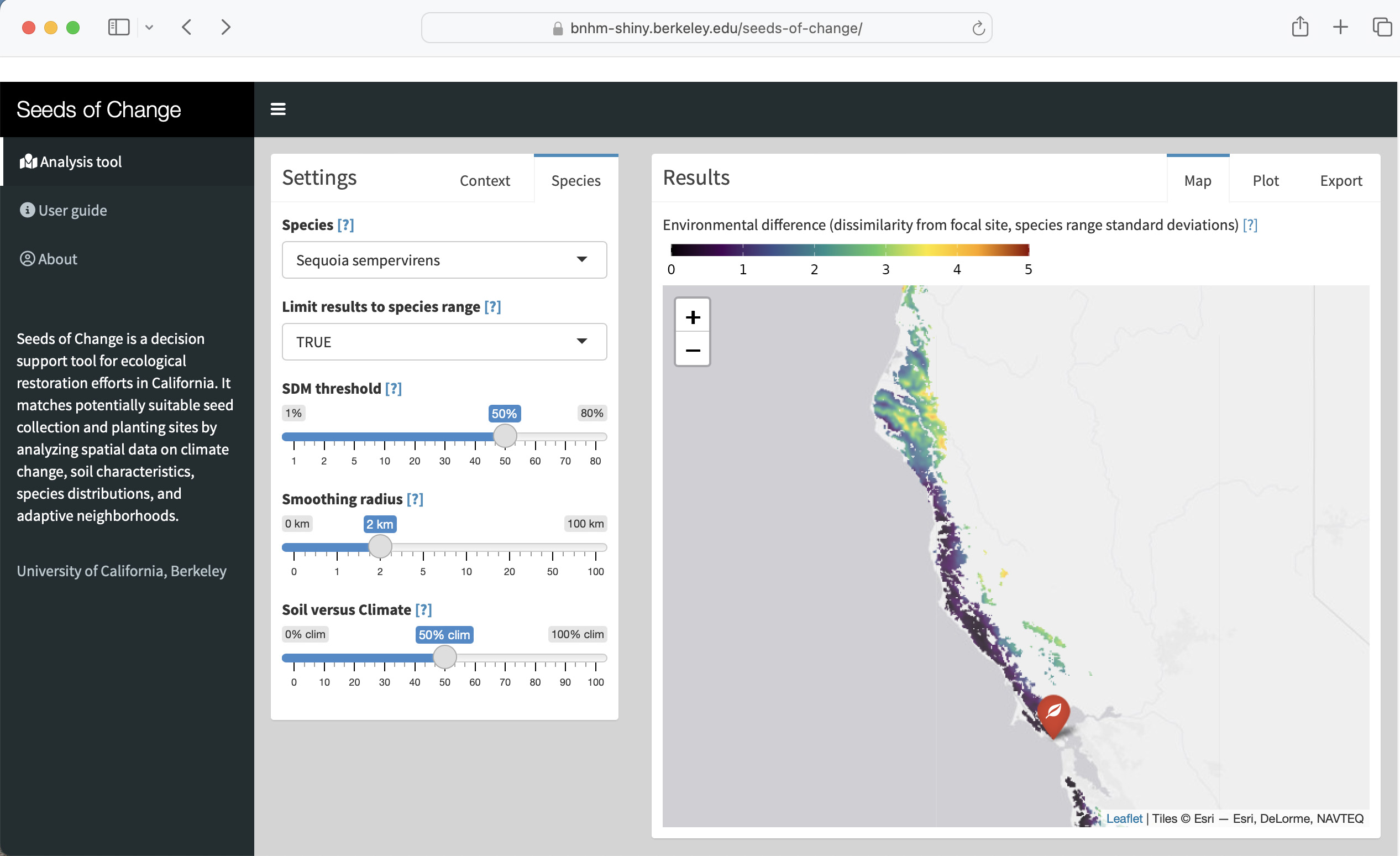To contribute to effective biodiversity conservation under climate change, the University of California, Berkeley, has developed the new spatial tool Seeds of Change to help parks and protected areas in California select plant seeds for resilience to climate change. The tool is at:
https://parks.berkeley.edu/seedsofchange
Agricultural expansion, livestock grazing, urbanization, and other human actions have degraded or eliminated natural vegetation in ecosystems around the world. To restore ecosystems, resource managers of national parks and other protected areas raise native plants in nurseries and re-plant. Human-caused climate change, however, has been altering and geographically shifting areas of suitable habitat. So, restored vegetation may not be adapted to hotter or drier climates in the future.
On the Seeds of Change web page, users can type in the scientific name of a plant species in California, specify key species parameters and climate change scenarios, and click on the map to identify places to collect seeds to plant at that site or places to plant with seeds from that site. Users can export a geographic information system (GIS) file of the results.
Seeds of Change analyzes and visualizes spatial patterns of five climate and 16 soil variables across the geographic ranges of 5211 plant species in California. The tool incorporates data on current plant occurrences from the UC Berkeley University and Jepson Herbaria and the Consortium of California Herbaria and projections of potential future climate change from Intergovernmental Panel on Climate Change data.
Dr. Matthew Kling, global change biologist, who earned his Ph.D. at UC Berkeley and now works as a researcher at the University of Vermont, conducted the analyses and wrote the code, with the collaboration of Dr. Patrick Gonzalez, climate change scientist and forest ecologist at UC Berkeley, user input from the U.S. National Park Service, web hosting by the UC Berkeley Natural History Museums, and funding from the UC Berkeley Institute for Parks, People, and Biodiversity.

